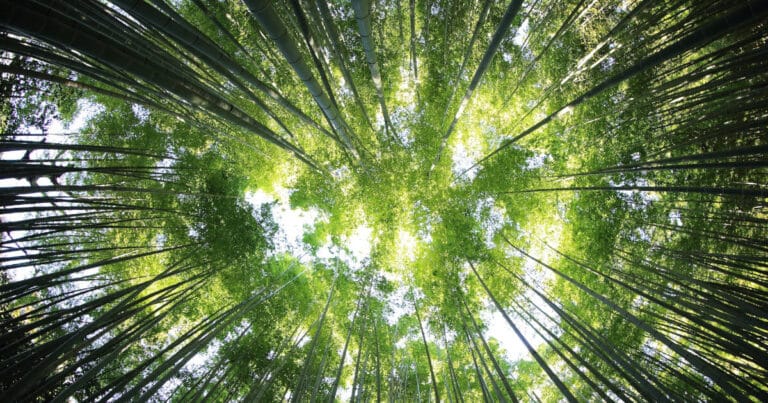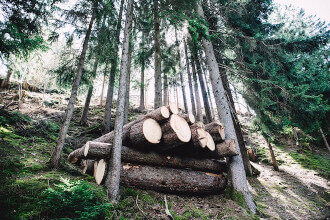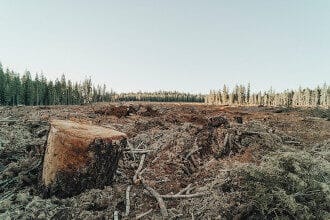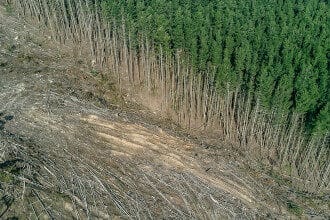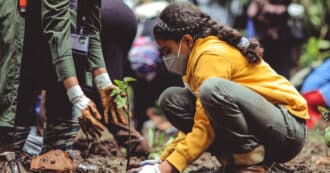By Ethel Mendius – Forests sustain “more than three-quarters of the world’s life on land,” including wildlife and many human communities. They are also the source of timber, a resource that has been essential for human progress. However, our species has not been able to protect forests or preserve them for future generations. The largest forest in the world, the Amazon Rainforest, has “lost at least 17% of its forest cover in the last half century due to human activity”, with devastating consequences.
Sustainable forestry is a set of forestry principles that seeks to “create a balance between wildlife, local communities, and wood production.” In practice, this means an attempt to “mimic the natural falling of trees in order to cause minimal disruption to the forest ecosystem” and preserve forests as both a natural resource and a wildlife habitat.
Why Do We Need Sustainable Forestry?
For the sake of short-term economic growth, forests have been “cut down to clear land for the development of roads and cities” and for commodities such as wood and palm oil. Developing countries feel the greatest need for this growth and also suffer the greatest consequences when forest resources are not managed sustainably.
In recent years, “sustainable forestry has proven to be profitable and healthier to the environment than traditional forest clearing” and has become an essential sustainable development goal. At the 2021 COP26 conference, world leaders committed to “‘working collectively to halt and reverse forest loss and land degradation by 2030.'”
Deforestation
The loss of forest lands leads to a host of environmental problems such as degraded land, soil erosion, coastal flooding, and a loss of animal and plant species. Many of these problems are irreversible and come with their own knock-on effects such as poor water quality and forest fires.
Deforestation “has been proven to have many economic downsides,” threatening communities and posing a threat to local livelihoods. In the extreme, “many people are completely forced out of their homes due to deforestation.”
Climate Change
Deforestation “directly contribute[s] to climate change by releasing carbon dioxide into the atmosphere” and prevents forest trees from sequestering it. Current estimates suggest that “25% of the world’s total greenhouse gas production comes from deforestation alone.” Sustainable forestry has emerged as a practice that “can not only help rebuild forests, but do so in a way that helps them sequester and store more carbon,” providing a powerful tool with which policy makers can fight climate change and another incentive for sustainable forestry.
Sustainable Forestry Practices
Sustainable forestry practices “vary from forest to forest.” The goal is to “harvest timber in a way that doesn’t destroy the overall health of the forest” and even encourage forest regeneration by felling older trees and planting new ones. Sustainable management begins with extensive knowledge of the forest areas being served, including its wildlife and local community. Forest managers and workers alike must be well-versed in the needs of local forests. Their work requires efficient use and maintenance of these lands by means such as selective logging, pruning and controlled burns.
Traditional Knowledge
These and other sustainable forestry practices include techniques developed by indigenous communities over the centuries. Sustainable forestry can be helped along by this traditional knowledge. For example, many historic Native American communities “used the solution of controlled fire burning and underbrush clearing” and “emphatically supported a vibrant sustainable forestry.” Sustainable forest management can draw from these techniques. In the case of Latin America and other regions with a high indigenous population, it can inspire cooperation between local governments and forest communities.
Benefits Of Sustainable Forestry
Sustainable forestry ensures that forests are able to “provide the natural resources, such as wood and clean water, we need now and in the future.” Protecting these forest resources provides benefits for plant, animal, and human life.
Biodiversity
The resources provided by a diverse ecosystem are “essential for human survival,” and the key to preserving biological diversity is forest conservation. The United Nations Environment Programme (UNEP) reports that forests cover “almost a third of the global land area and harbour most of the Earth’s terrestrial biodiversity.” Will Simonson, a Senior Programme Officer at UNEP, says that “‘Conservation, restoration and sustainable use are key to curbing deforestation and protecting the world’s forests into the future.”‘ These choices protect the breadth of forest ecosystem services available to us.
Economic Development
The same report emphasizes that economic activity is dependent on healthy forests, particularly in the developing world, where forests provide 86 million jobs. In the global communities facing extreme poverty, “over 90 percent are dependent on forests for wild food, firewood or part of their livelihoods,” and forestry must take their needs into account.
Timber
Sustainable forest management allows us to get the most from the natural resources forests have to offer. With these methods, we can yield timber without harming forest health. The best management practices leave a surplus of timber, and “mass timber construction has become a creative way to use this excess wood and decrease carbon emissions.”
Water Resources
In addition to the wood provided by forest trees, “forests play an important role in regulating the global water system” by absorbing and purifying rainwater into underground aquifers. It is estimated that “75% of the freshwater that we rely on,” including in many urban areas, “is dependent on forests.” Threats to forest health is a threat to economic stability at large, so there exists a “strong business case” for forestry practices that heed water availability.
Monitoring Sustainable Forestry
Sustainable forestry requires a high level of accountability, which begins with local government taking measures to regulate sustainable forestry and prevent illegal logging. In addition, many forest landowners undergo third party certification to prove products from their forests meet internationally-recognized standards. Two examples of forest certification providers are The Sustainable Forestry Initiative (SFI), which operates in North America, and the Forest Stewardship Council (FSC), which is worldwide. Certifications such as these are “emblematic of a sustainable wood harvesting process.”
Third party certification also allows for an international sustainable forestry agenda that includes “particular care to protect ‘high conservation value forests,'” which includes forests with high biodiversity, rare ecosystems, or “are fundamental to meeting the basic needs or defining the cultural identity of forest communities.” These certifications themselves must be monitored by other organizations to ensure they are meeting the true needs of the forest.
The Bigger Picture
Certification is just one of many strategies we must employ to achieve sustainable forestry, which is no small task. Managing forests sustainably requires a global effort as well as, in the words of UN Secretary-General Mr Ban Ki-moon, “‘political commitment at the highest levels, smart policies, effective law enforcement, innovative partnerships and funding.'” In some cases, this means an overhaul of industries that rely on overlogging or deforested lands. However, as the human population and thus the demand for timber increases, sustainable forestry becomes a necessary investment for the well-being of forest ecosystems, the health and livelihood of local communities, and the survival of future generations.
Sustainable Forestry and Religion
In Ethiopia, unsustainable forestry is against their religion. An article on ArchDaily describes how the Tewahedo Orthodox Church in Ethiopia are almost the only force preserving the remaining forests in Ethiopia which have decreased from covering about 40% of Ethiopia in 1900 to 5% today.
Why is the Tewahedo Orthodox Church protecting these forests? Because these are the forests that surround their church buildings. The Tewahedo believe that their churches must be surrounded by these forests which are islands of biodiversity and local species surrounded by seas of agricultural plantations. Now, even the remaining 5% of forest that these churches are protecting is being chipped away by the agricultural plantations.
In Ethiopia we see a beautiful example of how religion is practicing sustainable forestry by protecting the remaining trees. But they need help. In our globalized world, one religion cannot stand alone against environmental destruction. All religions must work together to protect our forests and protect our planet.
* Featured image source

